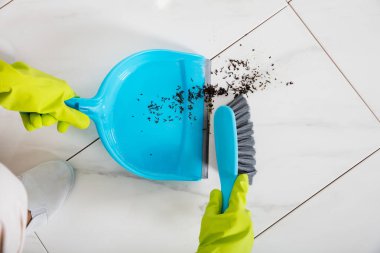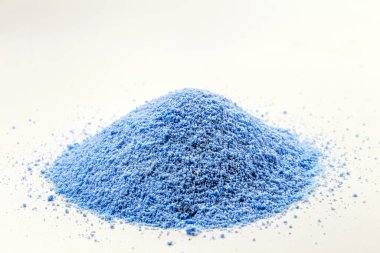- Home
- How to Dispose of Household Hazardous Waste
- How to Dispose of Unused Grout Powder
How To Dispose Of Unused Grout Powder: Leftover Grout Hazardous Waste
Disposing of unused grout powder can seem complicated, but it's crucial for maintaining a clean and safe environment. Whether you've completed a tiling project or have leftover materials, understanding how to safely dispose of grout powder is essential. This guide will provide you with simple steps to ensure your unused grout doesn't harm the environment or take up unnecessary space in your home.
Before you start, it's important to recognize that grout powder can't just be thrown in the trash or washed down the drain. Proper disposal methods protect your plumbing, and the environment, and comply with local regulations. By following this guide, you'll learn how to handle unused grout powder responsibly and efficiently.
Understanding Grout Powder and Its Disposal Necessities

Grout powder is a blend of cement, sand, and sometimes colorants and polymers, used to fill gaps between tiles. Its proper disposal is crucial because, when not handled correctly, it can lead to environmental pollution and plumbing issues. Knowing the right disposal method is key to avoiding these problems.
What Is Grout Powder?
Grout powder is a construction material that, when mixed with water, fills the spaces between tiles to secure them in place and provide a finished look. It's available in various colors to match or contrast tile designs, enhancing the overall appearance of a tiled area.
Why Proper Disposal Matters
Proper disposal of grout powder is necessary to prevent clogs in drains and pollution in water systems. It ensures that your home and the environment stay clean and safe.
Hazardous Waste Concerns
While grout itself is not classified as hazardous household waste, improper handling can contribute to environmental damage. It's crucial to dispose of grout through proper disposal methods to avoid contaminating landfills and waterways. Always consider the impact on local ecosystems when disposing of construction materials.
Practical Steps for Disposing of Unused Grout Powder
Properly disposing of unused grout powder involves a few straightforward steps that ensure safety and compliance with environmental standards.
1. Harden It With Water Before Disposal
To safely dispose of grout, first mix it with water to harden it. This step prevents the powder from causing blockages or damage if it accidentally enters the water system.
Materials You’ll Need
For this process, you'll need a sturdy container, water, and a mixing tool. Choose a container that can comfortably hold the grout and water mixture, ensuring there's enough space to mix them thoroughly without spilling.
Detailed Steps to Follow
Begin by gradually adding water to the grout powder in the container, mixing continuously until you achieve a thick consistency. Allow the mixture to sit until it hardens completely. This wet grout can now be safely disposed of without the risk of it scattering as a powder or clogging drains.
You may also like to know how to dispose of grout water
2. Taking It to a Local Landfill or Hazardous Waste Facility
Once the grout has hardened, it can be disposed of as solid waste at a local landfill or hazardous waste facility, ensuring proper disposal.
Preparing the Grout for Transportation
Place the hardened grout in a sturdy container to prevent any leakage or spillage during transportation. Label the container clearly, indicating its contents, to help landfill or waste facility staff manage it appropriately.
Contacting Local Authorities for Specific Guidelines
Before disposing of the grout, contact your local waste management authorities to confirm any specific guidelines for construction waste. This ensures that your disposal method aligns with local regulations and helps maintain environmental safety.
Alternatives to Disposal: Making the Most of Unused Grout

Instead of disposing of unused grout, consider alternative uses that can make the most of this material. From creative projects to donations, there are several ways to repurpose grout powder effectively.
1. Creative Uses for Leftover Grout
Leftover grout can be a valuable material for DIY projects. Use it to create custom coasters, repair small cracks in walls or floors, or even engage in artistic endeavors. Viewing grout as a versatile material can transform it from solid waste to an essential component of your next project.
2. Donation: Sharing What You Won't Use
If you have unused grout that you won't use, consider donating it to local schools, community centers, or construction projects. Sharing your surplus materials can help others complete their projects while reducing waste and promoting sustainability.
Common Questions About Grout Disposal Addressed
When it comes to home improvement, knowing how to handle leftovers, like grout powder, is key. You might have questions about its disposal, especially if you're left with more than you need. Two common inquiries include whether you can wash grout down the drain and how to clean out a bucket with dried grout. Let's clear up these questions.
1. Can Grout Be Washed Down the Drain?
Grout should never be washed down the drain. It can harden and block your pipes, leading to expensive plumbing issues. Solid waste, like grout, doesn't dissolve in water. Instead, it settles and clogs pipes. Always opt for solid disposal methods to avoid these problems.
2. How to Get Dried Grout Out of a Bucket Efficiently
Removing dried grout from a bucket can be a challenge. However, if you're working with porcelain tiles, take extra care not to scratch them. Soak the bucket in water to soften the grout. Then, gently scrape it out. This method helps preserve your bucket for future use without damaging it or any delicate surfaces you're working on.
The Lifespan and Storage of Grout Powder

Grout powder can last a long time if stored properly, but knowing how long and the best ways to store it can save you from unnecessary waste. Let's explore how to maximize its lifespan and storage practices.
1. How Long Does Grout Last in the Bag?
When unopened and stored in the right conditions, grout powder can last up to a year. The key is to keep it in a dry, cool place. Moisture is the enemy of grout powder, causing it to harden prematurely.
2. Best Practices for Storing Unused Grout
To ensure your grout stays usable, store it in a dry area. Use airtight containers if the original packaging is damaged. Regular household cleaning can prevent moisture buildup in storage areas, further protecting the grout. These simple steps can extend the life of your grout powder significantly.
Environmental Considerations in Grout Disposal
Disposing of grout responsibly means considering its impact on the environment. Grout disposal can contribute to construction waste, so it's essential to follow eco-friendly practices. Let's dive into how to do this correctly.
1. Is Grout Considered Hazardous Waste?
While not typically classified as hazardous waste, grout disposal still requires care. Wear protective gear, like gloves, to handle it safely. Look into recycling programs or glass cleaners that might make use of grout. This approach ensures you're not unnecessarily contributing to landfill waste.
2. The Importance of Following Local Regulations for Disposal
Local regulations play a crucial role in disposing of materials like grout. These laws ensure that disposal methods are safe for the environment and public health. Always check with your local waste management authorities to follow the right procedures.
Ensuring a Clean and Safe Disposal Process
Properly disposing of grout not only keeps your workspace clean but also protects the environment. With the right safety gear and knowledge, you can dispose of grout efficiently and responsibly.
1. Safety Gear and Clean-Up Tips
Before you dispose of grout, put on protective gloves and ensure you're working on a flat surface to avoid spills. Hazardous household waste requires careful handling, so follow local guidelines closely. These precautions help make the disposal process safe for you and the environment.
2. Labeling and Transporting Grout for Disposal
When ready for disposal, label the grout clearly and use sturdy containers for transportation. This helps waste management personnel handle your waste correctly and ensures a smooth disposal process. Following these steps contributes to a cleaner and safer environment.
Final Thoughts on Disposing of Unused Grout Powder Responsibly
Disposing of unused grout powder responsibly is essential, not just for keeping your workspace tidy but also for ensuring that you're not harming the environment. Remember that not all waste can simply be flushed down the drain or tossed into any plastic trashcan.
Specifically, disposable basins are handy for mixing small amounts, while larger projects might see the utility of a dedicated garbage bag for disposal. Be mindful of how household waste, like discolored grout, interacts with different materials such as cleaning product containers and aerosol cans.
These interactions can have unintended effects on treatment systems, highlighting the need for careful disposal. Moreover, DIY enthusiasts should consider the broader impact of their projects, including waste disposal, to maintain a responsible and sustainable approach to their crafts.